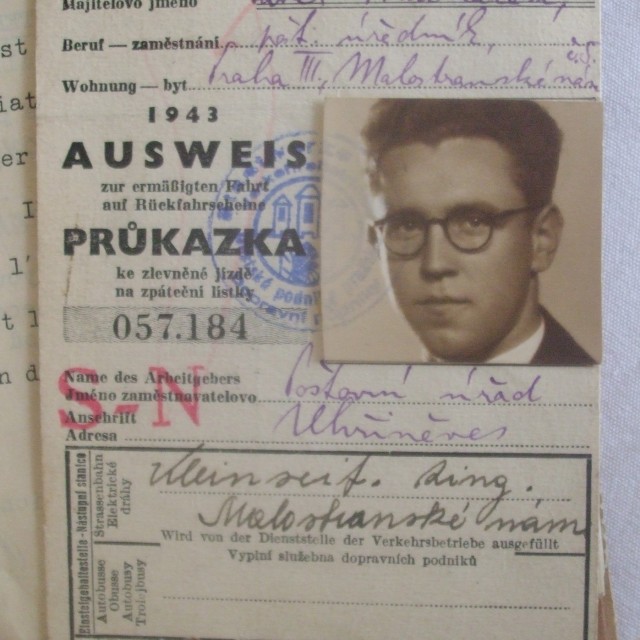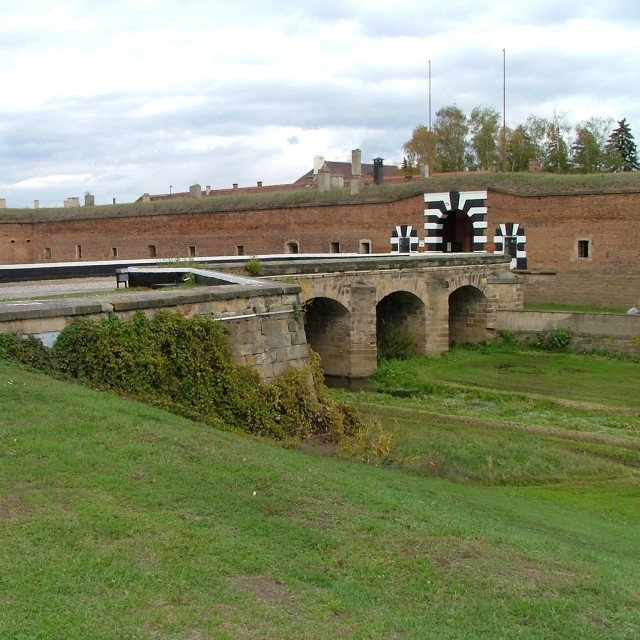He broke a broomstick handlebar on his head
He broke a broomstick handlebar on his head Pavel Macháček recalls an “Apel” in Terezín, during which prisoners were called out to the transport. One of the prisoners did not respond fast enough and the warden beat him so hard with a broomstick handlebar that it broke into pieces: “I didn't understand how it was possible that the skull resisted the beating. Nevertheless, it resisted and the prisoner had to go into the transport,” Macháček recalls. Warden Roiko, according to the memories of contemporary witnesses belonged to the “better ones,” at least at first. But gradually he turned into a dreaded sadist.
Hodnocení
Abyste mohli hodnotit musíte se přihlásit!
Strecken
Diese Geschichte ist in keiner Strecke.
Kommentare

Pavel Macháček
Pavel Macháček was born in Prague on August 15th, 1921. He died at the end of 2008. His father was a school director at the First Republic times. His mother co-founded an organization for mother and child protection where she later worked as a secretary. She passed away when he was 9 years old. His father lived till 79 years of age, he died in 1953. During the war he was hiding his Jewish classmate Jiří Synek, (a world famous poet these days, his pen name is František Listopad), whom he provided with his own Protectorate documents. He was arrested by Gestapo for an alleged theft of an official stamp in 1943. The truth was, though, that the stamp was stolen from the Gestapo office just by his friend Jiří Synek. Synek stole the stamp in a watch-less moment right after the Gestapo copied the initials from the borrowed documents. Synek wanted to help home anti-Nazi resistance movement with the stamp. Macháček was tortured in the investigation jail in Karlovo Square in Prague in order to tell who stole the stamp. Nevertheless, he never told who it was even if he suffered inhuman torment. (František Listopad comments on Pavel Macháček's narration, see Additional materials. Please feel free to register, free of charge). Pavel Macháček was on the basis of that case transported to the concentration camp Terezín in April 1944. He eye-witnessed the Nazi massacres and brutalities done to the prisoners there. He was later transferred to Flossenbürg. In April 1945 he was marked as a prisoner capable of walking and was included in the so called death march. He was at the point of absolute exhaustion after three days of walking. The crowd marched about a hundred kilometers. He was rescued by the American Army near the camp Dachau. He joined the Communist Party of Czechoslovakia on May 23rd, 1945. He served as a professional soldier of the Czechoslovak Army in the field of political education till 1970. After 1970 he failed the Army examinations as "politically unreliable." He was fired from the Army and shortly worked as a warehouse man and then as a security and fire technician in the post and newspaper services. He changed many different working and administrative jobs. In the meantime he finished his studies of Adult Education at Charles University. Shortly before and after the revolution in 1989 he became active on the political scene - he became a member of Obroda movement - a Club for Socialist Restructuring. Members of that political initiative were mostly former members of the reformatory wing of the Communist Party of Czechoslovakia. The initiative didn't have any important influence on political and economic reforms after November 1989.







